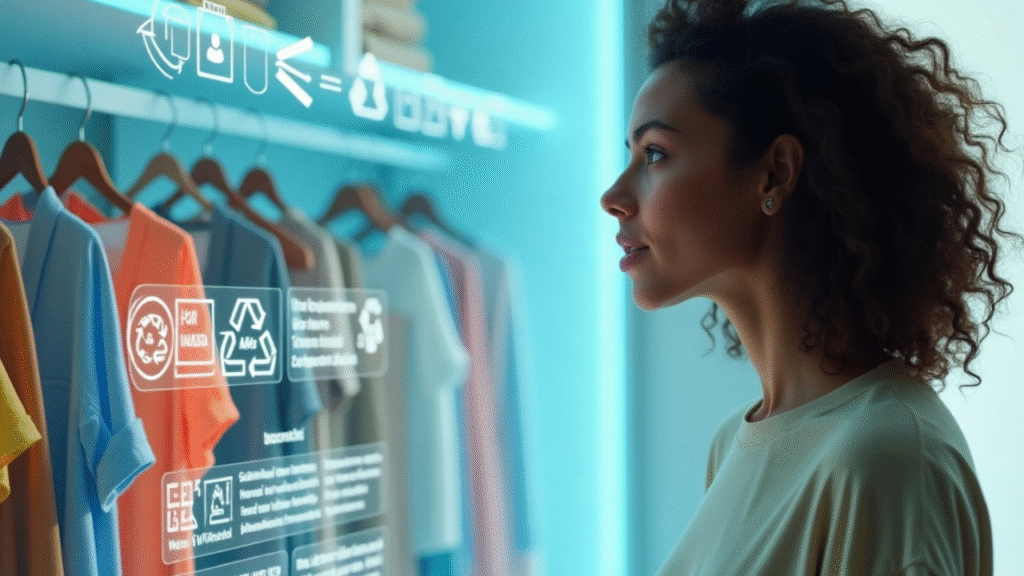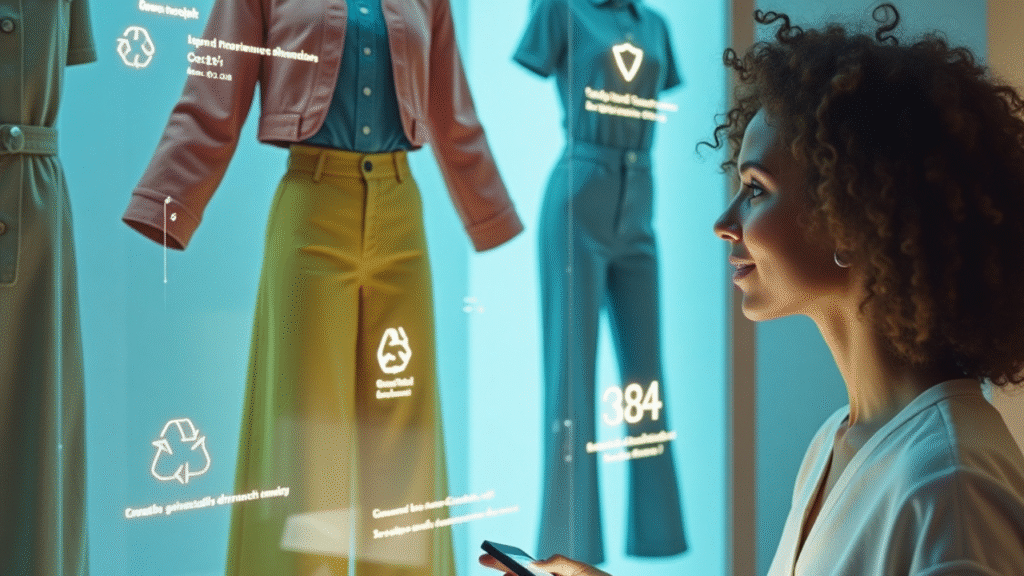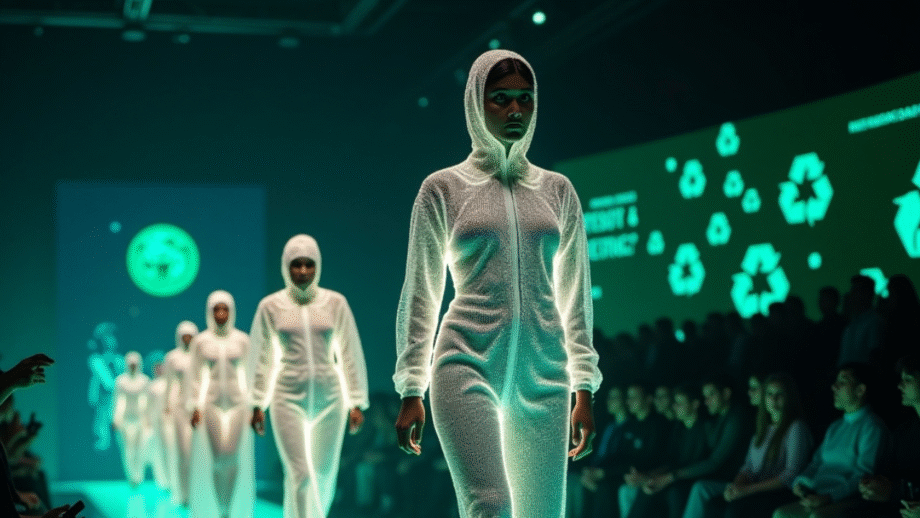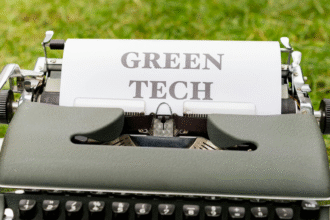Fashion has always been about reinvention. From the rise of haute couture to fast fashion, every era has reshaped the way we express style. But today, the fashion industry faces a challenge bigger than ever before—sustainability. With climate change, resource depletion, and environmental concerns at the forefront, the industry is under pressure to innovate.
This is where two groundbreaking forces come together: Digital Fashion and Green Technology. The fusion of these two trends is not only transforming the way we design and consume clothing but also paving the way for a more sustainable and responsible fashion future.
What is Digital Fashion?
Digital fashion refers to clothing designed, created, and worn virtually—through 3D design, augmented reality (AR), and virtual reality (VR). These outfits may never exist physically but can be showcased online, in gaming platforms, or in the metaverse.
For consumers, this means they can “wear” an outfit on Instagram without ever owning it in real life. For brands, it means they can cut fabric waste, reduce production costs, and experiment without harming the environment.
Digital fashion has grown rapidly with the popularity of:
- NFT-based clothing (owning a unique piece of digital apparel).
- Virtual try-on technology (seeing how clothes look before buying).
- Gaming fashion collabs (outfits designed for avatars in Fortnite, Roblox, or other virtual worlds).

How Green Technology Powers Sustainable Fashion
Green technology in fashion focuses on eco-friendly production, renewable materials, and low-impact processes. Some examples include:
- Recycled and biodegradable textiles such as fabrics made from PET bottles, bamboo, or orange peels.
- Waterless dyeing technology that saves billions of liters of water.
- Carbon-neutral production processes using renewable energy.
- Circular economy models where old clothes are recycled into new garments.
The key idea is simple: fashion can be stylish while leaving a lighter footprint on the planet.
Where Digital Fashion Meets Green Tech
The real magic happens when digital fashion merges with green technologies. Together, they are shaping an era where sustainability is not a buzzword but a built-in feature.
Here’s how the synergy works:
1. Less Physical Waste
With digital clothing, brands can test new collections virtually before mass production. This reduces fabric waste and prevents unsold stock from ending up in landfills.
2. Eco-Friendly Prototyping
Instead of producing dozens of physical samples, designers can create digital prototypes. Once finalized, they can be manufactured with sustainable materials and energy-efficient methods.
3. Circular Economy with Smart Fabrics
Digital tools help track clothing lifecycles, while green technology ensures these garments are recyclable or biodegradable. Together, they strengthen the circular fashion economy.
4. Virtual Wardrobes Reduce Overconsumption
Imagine buying a virtual outfit for an online event instead of purchasing fast fashion for a one-time photo. This cuts down on unnecessary consumption and lowers the industry’s carbon footprint.
5. Consumer Awareness and Transparency
Blockchain and digital tracking combined with green manufacturing provide full transparency—from fabric origin to end-of-life recycling. This builds trust and encourages conscious consumerism.

Examples of Digital & Green Tech Fashion
- The Fabricant – A digital fashion house creating purely virtual outfits.
- Stella McCartney – Experimenting with bio-based and recycled materials while exploring digital fashion collaborations.
- Adidas & Nike – Launching NFT sneakers and exploring green-certified production.
- Carlings (Norway) – Released a fully digital clothing collection to highlight waste-free fashion.
These brands are proving that fashion can be innovative, eco-friendly, and digital-first.
The Benefits of This Transformation
- For the Planet: Lower emissions, less water consumption, and less waste.
- For Consumers: Unique fashion experiences with both physical and virtual wardrobes.
- For Brands: Reduced costs, innovative designs, and positive brand reputation.
- For Society: A cultural shift towards mindful consumption and climate-conscious choices.
Challenges Ahead
Of course, this transformation comes with obstacles:
- Accessibility: Not everyone can afford digital fashion or eco-friendly collections.
- Technology Gap: Digital fashion requires advanced tools and skills not all brands possess.
- Consumer Adoption: Many shoppers still prefer tangible clothing over digital or sustainable alternatives.
- Energy Use in Digital Fashion: NFTs and blockchain, if not managed sustainably, can consume significant energy.
The good news? As technology advances and awareness grows, these challenges are slowly being addressed.

The Future of Sustainable Fashion
The future will be hybrid—a blend of digital wardrobes and eco-friendly physical clothing. Picture this:
- You own a digital wardrobe for online meetings and social media posts.
- Your physical clothing is made from green textiles, produced in energy-efficient factories.
- Both digital and physical wardrobes are tracked by blockchain, ensuring transparency and recyclability.
This is the new era of fashion—smart, clean, and sustainable.
Final Thoughts
Fashion is no longer just about trends; it’s about responsibility and innovation. The combination of digital fashion, smart fabrics, and green technology shows us a future where creativity meets consciousness. Instead of being one of the world’s largest polluters, fashion has the potential to become a leader in sustainability.
The next time you see a digital outfit on Instagram, slip into clothing made with eco-friendly smart fabrics, or hear about sustainable textiles, remember—you’re witnessing the foundation of a fashion revolution.
The new era of fashion isn’t just stylish. It’s sustainable, smart, digital, and green.







